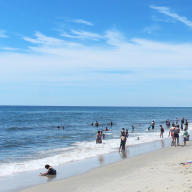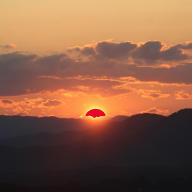Brooklyn-born Tom Dawes, an ex-folky who had previously played in a group called the Ironwood Knights, and Albany, NY, born Don Dannemann were both attending Lafayette College in Easton, PA, in 1961 when they decided to form a frat band called the Rhondells (not to be confused with the Rhondels, of Bill Deal the Rhondels fame who, oddly enough, later ended up signed to a label in Pennsylvania). The Rhondells mostly played covers of current pop/rock hits by the Four Seasons and other top groups of the era, as well as basic, dance-oriented rock roll. They were a cut above most other frat bands, however, in the care they gave to those covers, which mostly grew out of Dawes' and Dannemann's respective ears for music. Though officially the group's bassist, Dawes could also analyze the interior structure of any vocal ensemble that he heard and also began writing songs after meeting Dannemann, who was already writing songs when they met. They were good enough to play some of the better rooms in Atlantic City (long before the legalization of gambling), which was then a popular but somewhat declining East Coast resort. While playing the Alibi Lounge during the summer of 1964, they were heard by Nat Weiss, an entertainment lawyer and would-be music entrepreneur who suddenly became very prominent in 1964 when he hooked up with British manager Brian Epstein. He played a key role in getting the Beatles some prime gigs, including their Carnegie Hall and Shea Stadium concerts in 1964 and 1965, respectively.
In late 1965, Weiss got seriously interested in the group -- which also included drummer Marty Fried and keyboardist Earl Pickens -- and brought them to New York to play some club dates in Greenwich Village. The name the Rhondells, with its early-'60s aura, was abandoned in favor of the Cyrkle -- a name supposedly suggested by John Lennon, whose advice was asked by Epstein -- which was as clever a play on spelling as the Byrds (who were burning up the charts at the time) or, for that matter, the Beatles. The group was heard there by Barry Kornfeld, a musician and a friend of Paul Simon, who was then belatedly enjoying a ride to the top of the charts with the Simon Garfunkel single The Sound of Silence. Just back from England and preparing to record an album, Simon had a full songbag and not a lot of time.
As 1966 dawned, there was some interest gathering around the Cyrkle based on word-of-mouth from their shows, where they delivered a tight folk-rock sound. Spending a couple of years of being a rock roll band developing a tight sound, coupled with Dawes' prior stint in a folk band, paid off. Also helping was Weiss' hookup with Brian Epstein; at that time, any record label that could was trying to grab a piece of Epstein's action, based not only on the success of the Beatles but also that of Gerry the Pacemakers, Billy J. Kramer the Dakotas, and Cilla Black, among others, all of whom were generating serious sales and major amounts of money.
Just at that moment, Don Dannemann was obligated to leave the band and civilian life for a short stint in the United States Coast Guard, which put the band on hiatus. What seemed like an interruption in their momentum, however, became the source of one of the biggest breaks imaginable -- Dawes, left with nothing to do and having hooked up peripherally with Simon Garfunkel, signed on as bassist for Simon Garfunkel on one of their tours. While playing with them, he got to hear just about all of Paul Simon's songs that Simon cared to utilize. The duo's repertory was fairly thin, owing to their sudden success, including two numbers that Simon had written in England with Bruce Woodley of the Seekers, Red Rubber Ball and Wish You Could Be Here. Red Rubber Ball was recorded as soon as the quartet was back together, and with Epstein and Weiss exerting all of the pressure they could, got Columbia Records to sign the group and release the single. Issued in April of 1966, it rode the charts all that spring and got as high as number two, earning the group a spot on the Beatles' 1966 summer and subsequently, final scheduled, concert tour. The bandmembers themselves, who had started doing this as a lark in college and, as recently as six months earlier had been playing Greenwich Village folk clubs to audiences of a couple of hundred people, were astonished to find themselves suddenly thrust into the role of an arena act.
An LP, titled Red Rubber Ball, was recorded that spring under producer John Simon, utilizing the same lyrical folk-rock sound found on the 45 disc. It rose to number 47 on the charts and a second single, Turn Down Day, was issued in the early summer of 1966, reaching number 16 and thus completing the group's stay in the pop chart annals. They continued despite several personnel changes -- Earl Pickens left for medical school and was replaced by Mike Losekamp, and a second album, Neon, appeared in 1967, though the cover of that record depicted the band as a trio. Although it had some enjoyable cuts, Neon wasn't nearly as strong or accessible as its predecessor, and with no hit single to follow Turn Down Day, the group's fortunes gradually ebbed. They did record some interesting and ambitious songs during their final year of work, including Red Chair Fade Away, an early song by Robin and Barry Gibb of the Bee Gees; Dawes and Dannemann also proved themselves quite capable of writing good songs on their own. The death of Brian Epstein in the summer of 1967, however, interrupted whatever lingering interest there was in continuing with the group.
At around the same time that the group was collectively assessing its future, Tom Dawes happened to sell a jingle he'd written for a commercial to an advertising agency. The five-figure fee he collected for the sale (on top of any royalties from re-use) came a lot easier than a five-figure income from playing shows at that date, more than a year after their last hit. The chronology of the Cyrkle's final days is a little difficult to figure out because Dawes did quit in early 1968, followed byLosekam and Dannemann.
During the group's final days together, they contributed songs -- including some very spaced-out psychedelia to an independently financed dramatic film that was eventually released as a sexploitation vehicle under the title #The Minx. Losekamp played for other groups, while Dawes and Dannemann both went on to major careers writing commercial jingles. Dannemann's company, Mega Music, also produced the scores to several top-rated children's shows of the '70s and '80s, while Fried became an attorney and Pickens a doctor. Dannemann briefly re-emerged as a recording artist in 1981 when he and his wife recorded a single, "I Did It for You," as a tribute to John Lennon. The Cyrkle actually got back together to play a benefit in 1986, in connection with Hands Across America, but have not been heard from since. Their music is still being reissued, especially their two hits and with the occasional psychedelic cut, such as "The Words," which ended up on Psychedelic Archives, Vol. 6. In the late '80s, Columbia Records accidentally released an alternate mix of "Red Rubber Ball" on one of its multi-artist compilations that left out the organ and moved the guitars to the front of the mix. The 1991 compilation Red Rubber Ball assembled most of the group's popular and easily accessible Columbia recordings on one CD. And in 2002, Sundazed Records licensed the complete Cyrkle catalog, unearthing numerous worthwhile unreleased tracks and finally giving this underrated band the respect and attention they deserved. ~ Bruce Eder, Rovi


















